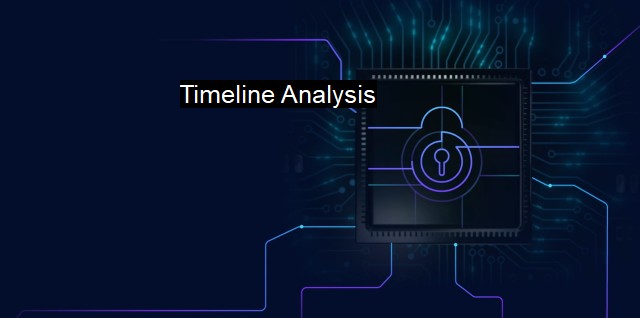What are Timeline Analysis?
The Importance of Timeline Analysis in Cybersecurity: The Process and its Applications in Incident Response and Forensic Investigations
Timeline analysis is a critical facet in the realm of cybersecurity and antivirus operations. It refers to a method of arranging and analyzing data based on when events occur. This procedure becomes crucial when determining malicious activities within a computer or network system, which can cause substantial damage if not attended to promptly.Fundamentally, timeline analysis on a system allows investigators and cyber security analysts to have a chronological overview of all occurrences documented within the system logs. These logs could include file and directory changes, user account actions, internet history, applications installed or uninstalled, and a multitude of other activities. This method, therefore, allows for the systematic scrutiny of these varied forms of data, facilitating the piecing together of a sequence of events, potentially shaping the narrative of any cyber security exploits.
In incidents around cyber-incidents or potential security breaches, the careful chronology of events derived from timeline analysis acts as the backbone for further actions. Identifying when an abnormal behavior took place effectively means the commencement of digital forensic work. Failure to notice fine details may lead to significant lapses and the obstruction of legal processes.
To better understand the significance, envision a cybersecurity investigator examining a corrupted system and seeking to identify the cause of the deviation. Without timeline analysis, pinpointing the exact instance of data breaches, and their hesitant or unwitting causative factors, could take an unjustifiably long time. Therefore, the computed system’s timeline analysis simplifies this process, providing a clear map from which investigators can navigate and pinpoint the compromise's origin.
Timeline analysis is integral to understanding the techniques and processes used by attackers, issues like how an invader behaved after gaining access, in identifying persistency methods and in understanding how often particular hacker groups attack the system. This analytical procedure also aids in finding any modifications made to system files or configurations changes, which might affect other systems' integrity within the cyber network.
Shotcut, The Sleuth Kit, and Volatility are some tools typically used to conduct timeline analysis. due to the consistently evolving world of cybersecurity, artificial intelligence (AI) is being integrated into these tools to refine the timeline strategies, provide real-time monitoring, enhance incident management, and scour through massive amounts of log data efficiently.
Timeline analysis does not happen in isolation. To have an effective defense or investigation, integrating timeline study with numerous other attack detection methods is undeniable. Consequently, specialists often use indicators of compromise (IoCs) and threat intelligence feeds in concert with timeline analysis to enhance their security postures.
In antivirus operations, timeline analysis permits the study of the sequence of attempted plus successful infections, malicious payload deliveries, and automatic reactions from the predefined antivirus algorithms. the resolution of detected threats involved timeline analysis as it accounts for each modification in the real-time protection module into its subsequent report.
With the rise of cyber-attacks and the sophisticated tactics deployed by threat actors in their malicious campaigns, timeline analysis thus constitutes a potent arsenal for every cybersecurity specialist, offering a step-wise foresight into nefarious activities within any system or network. By clarifying and isolating time-related data, it reveals patterns and dependencies, making it feasible to refine operations and prevention strategies in cybersecurity and antivirus activities. Consequently, efficient and comprehensive timeline analysis could significantly minimize potential security threats' impact on your system.

Timeline Analysis FAQs
What is timeline analysis in the context of cybersecurity and antivirus?
Timeline analysis is a method of analyzing computer data logs and event records to understand the sequence and timing of events that took place during a security incident. This technique helps to identify when an attack occurred, what actions the attacker took, and what information they accessed or modified.What are the benefits of timeline analysis in cybersecurity?
Timeline analysis provides a comprehensive understanding of the attack and its impact. This enables security professionals to mitigate the attack more quickly and accurately. Additionally, timeline analysis helps to identify other systems that have been affected and to determine if the attack is still ongoing.What are the challenges associated with timeline analysis in cybersecurity?
The biggest challenge in timeline analysis is processing large amounts of information in a short time frame. Additionally, it can be difficult to distinguish normal system activity from malicious activity, which requires a deep understanding of the organization's network infrastructure. Finally, the effectiveness of timeline analysis depends on the quality of the data collected; incomplete or inaccurate data can lead to incorrect conclusions.What tools are used for timeline analysis in cybersecurity?
There are multiple tools available for timeline analysis, both open source and commercial. Some of the popular ones include log analysis tools like Splunk and ELK (Elasticsearch, Logstash, Kibana), as well as forensic analysis tools like EnCase and Autopsy. These tools can help visualize and analyze the data, identify patterns and anomalies, and extract useful information.| | A | | | B | | | C | | | D | | | E | | | F | | | G | | | H | | | I | | | J | | | K | | | L | | | M | |
| | N | | | O | | | P | | | Q | | | R | | | S | | | T | | | U | | | V | | | W | | | X | | | Y | | | Z | |
| | 1 | | | 2 | | | 3 | | | 4 | | | 7 | | | 8 | | |||||||